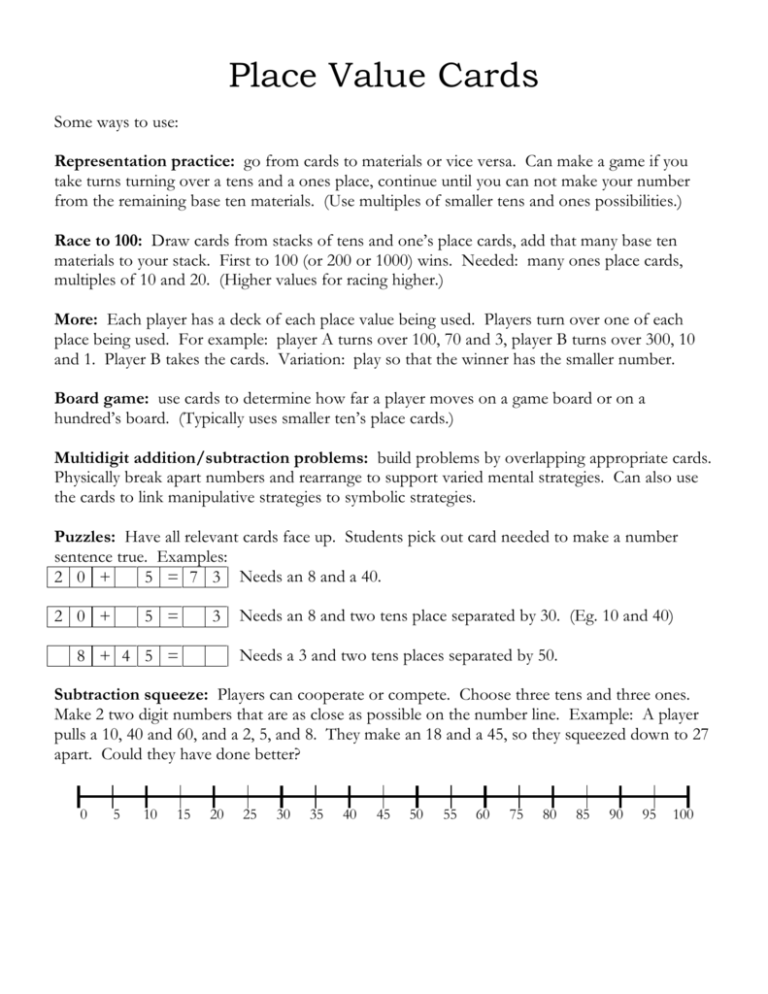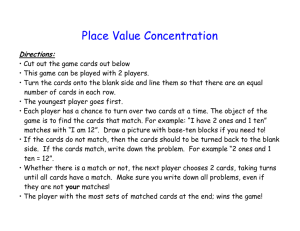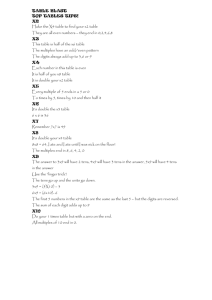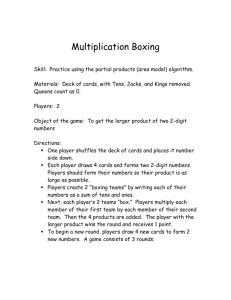Place Value Cards
advertisement

Place Value Cards Some ways to use: Representation practice: go from cards to materials or vice versa. Can make a game if you take turns turning over a tens and a ones place, continue until you can not make your number from the remaining base ten materials. (Use multiples of smaller tens and ones possibilities.) Race to 100: Draw cards from stacks of tens and one’s place cards, add that many base ten materials to your stack. First to 100 (or 200 or 1000) wins. Needed: many ones place cards, multiples of 10 and 20. (Higher values for racing higher.) More: Each player has a deck of each place value being used. Players turn over one of each place being used. For example: player A turns over 100, 70 and 3, player B turns over 300, 10 and 1. Player B takes the cards. Variation: play so that the winner has the smaller number. Board game: use cards to determine how far a player moves on a game board or on a hundred’s board. (Typically uses smaller ten’s place cards.) Multidigit addition/subtraction problems: build problems by overlapping appropriate cards. Physically break apart numbers and rearrange to support varied mental strategies. Can also use the cards to link manipulative strategies to symbolic strategies. Puzzles: Have all relevant cards face up. Students pick out card needed to make a number sentence true. Examples: 2 0 + 5 = 7 3 Needs an 8 and a 40. 2 0 + 5 = 3 Needs an 8 and two tens place separated by 30. (Eg. 10 and 40) Needs a 3 and two tens places separated by 50. 8 + 4 5 = Subtraction squeeze: Players can cooperate or compete. Choose three tens and three ones. Make 2 two digit numbers that are as close as possible on the number line. Example: A player pulls a 10, 40 and 60, and a 2, 5, and 8. They make an 18 and a 45, so they squeezed down to 27 apart. Could they have done better? 0 5 10 15 20 25 30 35 40 45 50 55 60 75 80 85 90 95 100 0 1 2 3 4 5 6 7 8 9 1 0 2 0 3 0 4 0 5 0 6 0 7 0 8 0 9 0 ? 0 1 0 0 2 0 0 3 0 0 4 0 0 5 0 0 6 0 0 7 0 0 8 0 0 9 0 0 ? 0 0 1 0 0 0 ? 0 2 0 0 0 ? ?











